


Notice: This is the official website of the All Empires History Community (Reg. 10 Feb 2002)
Finno-Ugrian impact on Russian ethnos |
Post Reply 
|
Page <1 678910 29> |
| Author | |||
aeon 
Shogun 
Joined: 11-Apr-2006 Location: Russian Federation Online Status: Offline Posts: 230 |
 Quote Quote  Reply Reply
 Topic: Finno-Ugrian impact on Russian ethnos Topic: Finno-Ugrian impact on Russian ethnosPosted: 22-Jun-2007 at 03:32 |
||
But the Y-hp N corellates very well with FU languages, so it is a good indicator.
No, IEs are the indigenous population of East Europe. FUs are later newcomers from East Asia. This is what the original FUs looked like (man of the FU Pit-Comb Ware culture, ca. 4000 BC):
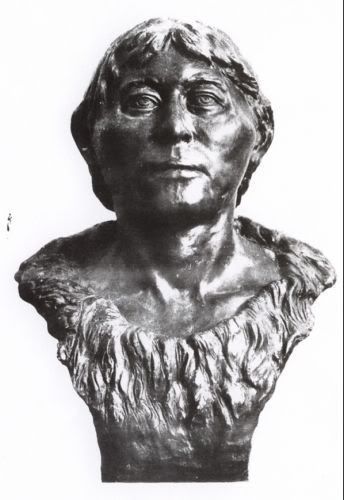 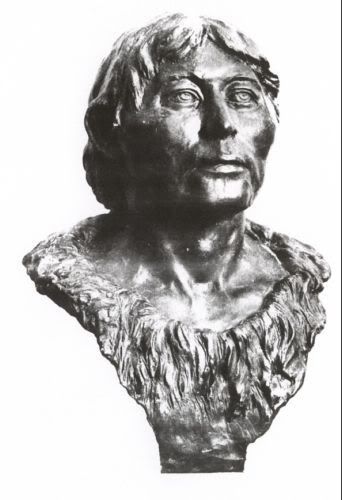 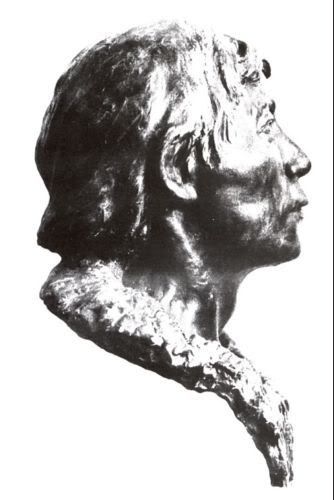 |
|||
 |
|||
aeon 
Shogun 
Joined: 11-Apr-2006 Location: Russian Federation Online Status: Offline Posts: 230 |
 Quote Quote  Reply Reply
 Posted: 22-Jun-2007 at 03:38 Posted: 22-Jun-2007 at 03:38 |
||
Yes, northern Belorussians have ca. 19% of the Finno-Ugrian Baltic hg N:
We estimated haplogroup N3 frequencies in the three Belarusian subpopulations. The results suggest that the uniqueness of the northern Belarusian population is most likely due to the high incidence of Y chromosomes from the haplogroup N3 (18.9%), which has half the frequency in central and southern Belarus (8.8 and 8.1%, respectively). Therefore, although the early ethnogenesis of the Belarusian nation has customarily been linked to the gradual Slavicisation of the homogeneous Baltic substrate on the territory of present-day Belarus (Sedov 1970), only northern Belarus seems to be a transient area for the Baltic and Slavic settlement.
Yes, Belorussians and Ukranians were the subject population in the Grand Duchy of Lithuania ruled by the Finno-Ugrian Lithuanian elite.
|
|||
 |
|||
aeon 
Shogun 
Joined: 11-Apr-2006 Location: Russian Federation Online Status: Offline Posts: 230 |
 Quote Quote  Reply Reply
 Posted: 22-Jun-2007 at 03:46 Posted: 22-Jun-2007 at 03:46 |
||
No, it is not.
GENERAL: также балаба́йка, бала́бойка, южн., зап. (Даль), укр. балаба́йка, также балаболька "бубенчики". Согласно Бернекеру (1, 40), к балабо́лить. Можно было бы также связать балала́йка (в качестве расширенной формы вместо *бала́йка) с бала́кать. Менее вероятно предположение Горяева (ЭС 10) о заимств. из тюрк., тем более что он не может указать источник. Ср. рум. bălălăí, bănănăí "качать, колебать, махать, размахивать", этимологии которого Тиктин (1, 152) не дает.
Balalaika is a Russian instrument of Russian origin, while kobza is a Turkic and Ukrainian instrument of Turkic origin.
|
|||
 |
|||
aeon 
Shogun 
Joined: 11-Apr-2006 Location: Russian Federation Online Status: Offline Posts: 230 |
 Quote Quote  Reply Reply
 Posted: 22-Jun-2007 at 03:50 Posted: 22-Jun-2007 at 03:50 |
||
Pechenegs were his allies against Khazars, they only later became his enemies. And Vikings never had the Turco-Mongol hairstyle, they wore long hair and beards, and were no different from "Muscovites".
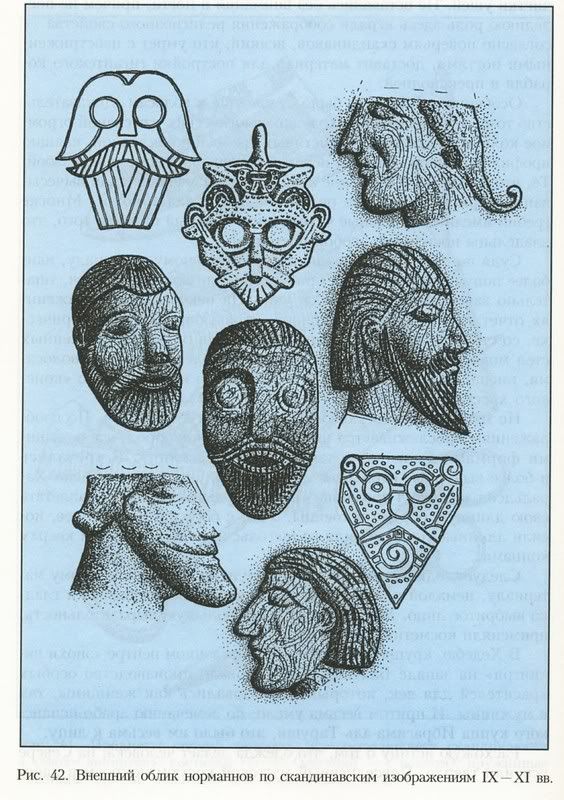 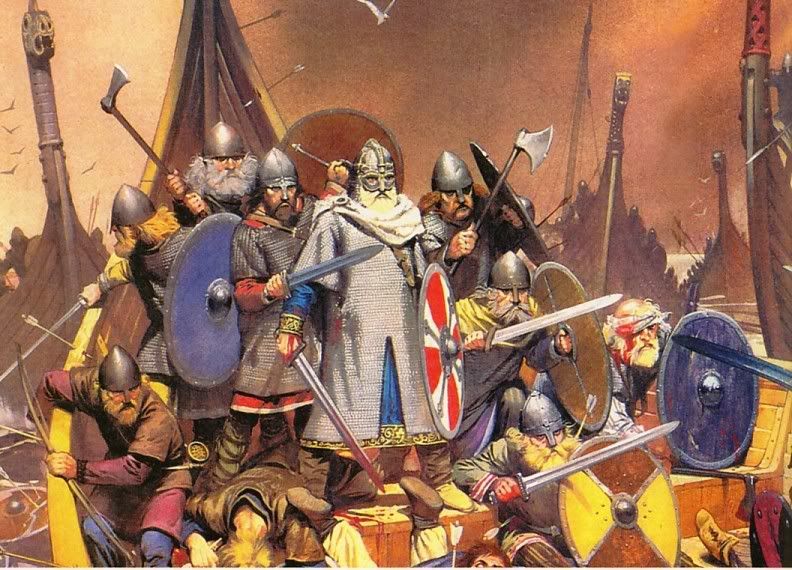 |
|||
 |
|||
aeon 
Shogun 
Joined: 11-Apr-2006 Location: Russian Federation Online Status: Offline Posts: 230 |
 Quote Quote  Reply Reply
 Posted: 22-Jun-2007 at 04:10 Posted: 22-Jun-2007 at 04:10 |
||
You are wrong to believe that Finns in Novgorod were second-class people. They could rise to very high posisitons. For example, in the early 13th century there was Semyon Yemin (i.e. from the tribe of yem' = Ha:me) who held the position of tysyatskiy (hiliarch), the second in rank after king. In the late 11th century there was a noble boyar Mikula Chudin (Finn or Estonian) who ruled Kiev together with king Vladimir Monomachus. Also, in the early 11th king Vladimir the Saint garrisoned his newly-built fortresses in Ukraine with northern people including Finns.
|
|||
 |
|||
aeon 
Shogun 
Joined: 11-Apr-2006 Location: Russian Federation Online Status: Offline Posts: 230 |
 Quote Quote  Reply Reply
 Posted: 22-Jun-2007 at 04:17 Posted: 22-Jun-2007 at 04:17 |
||
I have.
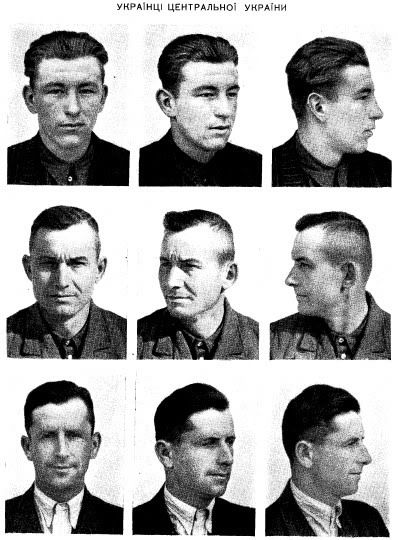 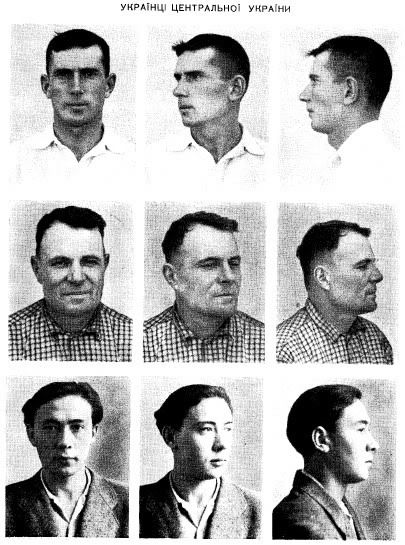 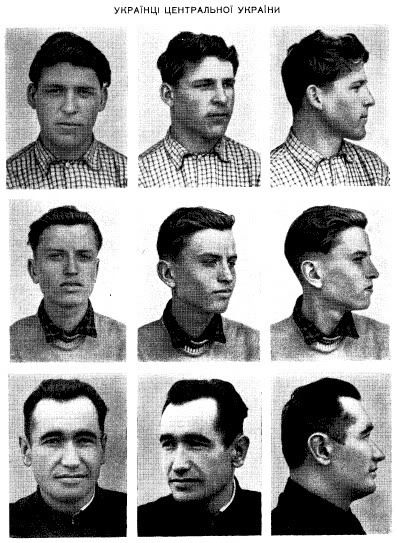 |
|||
 |
|||
Guests 
Guest 
|
 Quote Quote  Reply Reply
 Posted: 22-Jun-2007 at 04:48 Posted: 22-Jun-2007 at 04:48 |
||
Where is all this information based? Or what is the source? Interesting photo. Where is this Pit-comb ware culture man from? |
|||
 |
|||
Guests 
Guest 
|
 Quote Quote  Reply Reply
 Posted: 22-Jun-2007 at 05:01 Posted: 22-Jun-2007 at 05:01 |
||
This is very interesting information. Where i can read more about this (in english or finnish), or are these your own studies? ------------------------- Soon i have to start preparing for the last real Finnish pagan party to night.  party, party.... party, party....
|
|||
 |
|||
aeon 
Shogun 
Joined: 11-Apr-2006 Location: Russian Federation Online Status: Offline Posts: 230 |
 Quote Quote  Reply Reply
 Posted: 22-Jun-2007 at 05:48 Posted: 22-Jun-2007 at 05:48 |
||
It's all in Russian.
Sakhtysh near Ivanovo in north-central Russia. There are a few reconstructions of early FUs from Russia that look very similar.
These are Pit-Comb Ware people from Karavaikha, also near Ivanovo
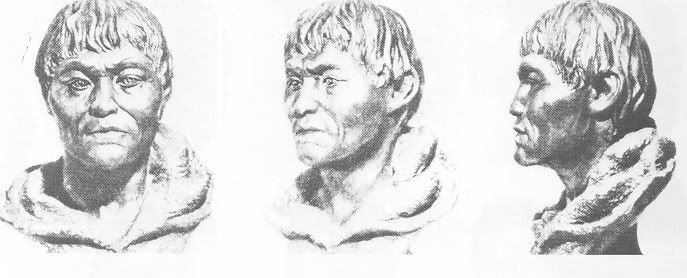 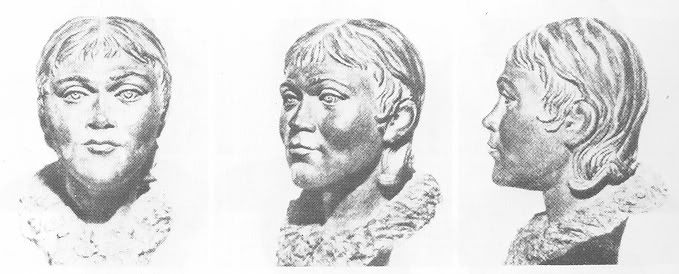 This man is from Yuzhny Oleny Ostrov in Karelia
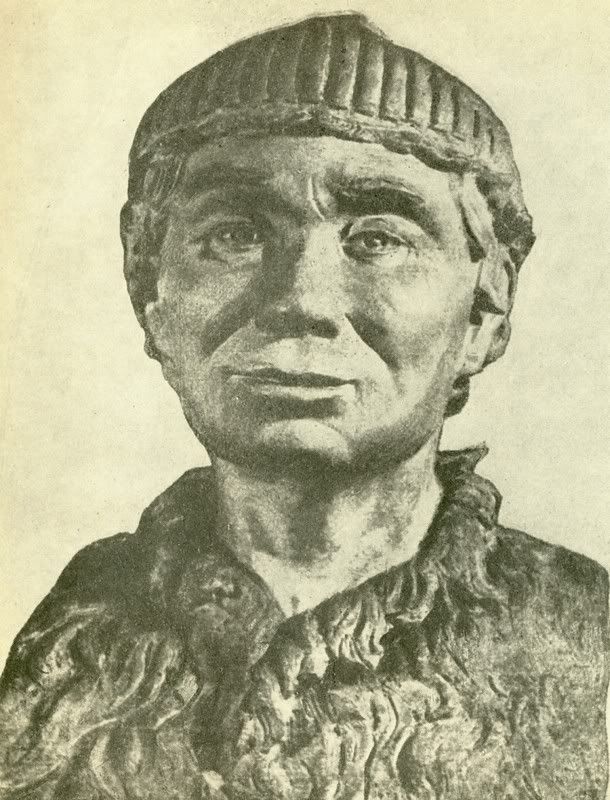 |
|||
 |
|||
aeon 
Shogun 
Joined: 11-Apr-2006 Location: Russian Federation Online Status: Offline Posts: 230 |
 Quote Quote  Reply Reply
 Posted: 22-Jun-2007 at 05:49 Posted: 22-Jun-2007 at 05:49 |
||
I have read it all in Russian.
|
|||
 |
|||
Anton 
Caliph 
Joined: 23-Jun-2006 Location: Bulgaria Online Status: Offline Posts: 2888 |
 Quote Quote  Reply Reply
 Posted: 22-Jun-2007 at 06:16 Posted: 22-Jun-2007 at 06:16 |
||
I suppose you are not serious.
Minimum? Are you joking? According to the Ukrainian Language Encyclopedia, there are about 4,000 Turkic loanwords in Ukranian.
[/QUOTE]
First of all, 4000 is nothing. Any Balkan nation has about that amount of Turkish words. Second, their grammatics is clearly slavonic.
|
|||
|
.
|
|||
 |
|||
Anton 
Caliph 
Joined: 23-Jun-2006 Location: Bulgaria Online Status: Offline Posts: 2888 |
 Quote Quote  Reply Reply
 Posted: 22-Jun-2007 at 06:20 Posted: 22-Jun-2007 at 06:20 |
||
You have because you are biased. Only the 6th guy in your list looks like having mongoloid features, but most likely he is Tatar not Ukranian.
|
|||
|
.
|
|||
 |
|||
aeon 
Shogun 
Joined: 11-Apr-2006 Location: Russian Federation Online Status: Offline Posts: 230 |
 Quote Quote  Reply Reply
 Posted: 22-Jun-2007 at 06:40 Posted: 22-Jun-2007 at 06:40 |
||
I am. How else can you explain the fact that when Ukranians arose as a distinct ethnicity in the 16th century they had no memory of the Russian state that existed in their land in the 10th-13th centuries?
|
|||
 |
|||
aeon 
Shogun 
Joined: 11-Apr-2006 Location: Russian Federation Online Status: Offline Posts: 230 |
 Quote Quote  Reply Reply
 Posted: 22-Jun-2007 at 06:42 Posted: 22-Jun-2007 at 06:42 |
||
They are all Ukranian. The images represent Ukranians from central Ukraine.
|
|||
 |
|||
Anton 
Caliph 
Joined: 23-Jun-2006 Location: Bulgaria Online Status: Offline Posts: 2888 |
 Quote Quote  Reply Reply
 Posted: 22-Jun-2007 at 07:19 Posted: 22-Jun-2007 at 07:19 |
||
What kind of memory would you like?
|
|||
|
.
|
|||
 |
|||
Anton 
Caliph 
Joined: 23-Jun-2006 Location: Bulgaria Online Status: Offline Posts: 2888 |
 Quote Quote  Reply Reply
 Posted: 22-Jun-2007 at 07:22 Posted: 22-Jun-2007 at 07:22 |
||
Anyone lived in Russia will tell you that this guy is not representative Ukranian. By that way one can post a picture of any "small northern nation" or Tuva or Sakha as a representative Russian from certain Russian district.
|
|||
|
.
|
|||
 |
|||
aeon 
Shogun 
Joined: 11-Apr-2006 Location: Russian Federation Online Status: Offline Posts: 230 |
 Quote Quote  Reply Reply
 Posted: 22-Jun-2007 at 07:37 Posted: 22-Jun-2007 at 07:37 |
||
You can not compare Tuva or Sakha to central Ukraine. And nobody will publish pictures of Tuvinians or Yakuts in a book about the anthropology of ethnic Russians.
|
|||
 |
|||
aeon 
Shogun 
Joined: 11-Apr-2006 Location: Russian Federation Online Status: Offline Posts: 230 |
 Quote Quote  Reply Reply
 Posted: 22-Jun-2007 at 07:38 Posted: 22-Jun-2007 at 07:38 |
||
Any memory at all.
|
|||
 |
|||
aeon 
Shogun 
Joined: 11-Apr-2006 Location: Russian Federation Online Status: Offline Posts: 230 |
 Quote Quote  Reply Reply
 Posted: 22-Jun-2007 at 07:46 Posted: 22-Jun-2007 at 07:46 |
||
|
Mongoloid admixture in Ukranians is well known to Ukranian anthropologists. This is what the most prominent Ukranian anthopologist Serhiy Seheda says:
Сергій СЕГЕДА
АНТРОПОЛОГІЧНИЙ СКЛАД ДАВНЬОРУСЬКОГО НАСЕЛЕННЯ
В антропологічній літературі останніх десятиліть неодноразово ставилося питання про роль кочівницького компоненту у форму\511\ванні морфологічних рис русинського населення Київщини, Чернігівщини та Переяславщини. Інтерес до цієї проблематики пояснюється численними літописними свідченнями про слов�янсько-тюркські взаємини в цих регіонах і знахідками кочівницьких поховань на давньоруських некрополях. Ще наприкінці минулого століття Д. Я. Самоквасов отримав на території колишнього Канівського повіту невелику краніологічну серію, в будові котрої виразно простежуються монголоїдні риси, а саме: брахікранія, низька висота склепіння, великі розміри обличчя, слабко профільованого в горизонтальній площині, низький кут виступання носа і т. ін. За цими ознаками вона близька до черепів зі Зливкінського могильника VIII�X ст., залишеного тюркомовними болгарами, які разом з аланами були носіями салтівської культури. Черепи з монголоїдними рисами виявлені і в інших місцевостях Середньої Наддніпрянщини, зокрема в Пороссі. Так, сліди монголоїдної домішки (сплощеність обличчя в горизонтальній площині, слабке виступання носових кісток і т. ін.) виявлені на чотирьох з восьми жіночих черепів з Миколаївського ґрунтового могильника. Ще в більш виразній формі вони фіксуються на чотирьох чоловічих і трьох жіночих черепах з могильника поблизу с. Хутір Половецький, звідки походить всього 26 черепів. Так, чоловічим черепам 9 (22), 3 (12), 9 (8), 9 (15) властиве нешироке, низьке, дещо сплощене обличчя, слабке виступання носа, невисоке перенісся і т. ін., що вплинуло на загальну характеристику серії. Деяке ослаблення європеоїдних ознак, яке виявилось у тенденції до пониження кута виступання носа, можна простежити і в інших серіях Середньої Наддніпрянщини, що, вірогідно, є наслідком регулярних контактів між давньоруською людністю та сусідніми кочівницькими групами. Зауважимо, що вплив тюркського (кочівницького) компоненту (збільшення діаметру вилиць, тенденція до сплощення обличчя та поперечної спинки носа і т. ін.) помітний і серед сучасного населення Південної Київщини, Черкащини та Полтавщини, де давньоруські літописи фіксують поселення торків, чорних клобуків, половців та ін. http://litopys.org.ua/segeda/se05.htm Сергій СЕГЕДА
АНТРОПОЛОГІЧНИЙ СКЛАД УКРАЇНСЬКОГО НАРОДУ
Крім того, на півдні Київщини, Черкащини, Полтавщини (там, де давньоруські літописи фіксують поселення середньовічних тюркомовних кочовиків) помітна певна монголоїдна домішка, зокрема збільшення діаметра вилиць та складки верхньої повіки, тенденція до сплощення обличчя та поперечної спинки носа тощо.
Дуже цікаві результати отримані за підсумками вивчення дерматогліфічної колекції з сіл Великополовецьке та Малополовецьке на Київщині, походження яких літописні джерела пов�язують з половецьким ханом XI ст. Турготканом. За свідченням �Повісті временних літ�, 1094 року Турготкан віддав заміж за київського князя Святополка свою дочку, а натомість дістав дозвіл поселити у княжих володіннях свою орду. Союз Турготкана із зятем був нетривким і через два роки хан загинув у битві з руськими воїнами. Одначе й за триста літ по тому � наприкінці XIV ст. � містом Сквирою та довколишніми селами, включаючи згадані, володів його нащадок Кориман. Це підтверджується археологічними даними, оскільки в курганах давньоруського часу, розкопаних в околицях Великополовецького, знайдені кочівницькі поховання. До того ж деякі прізвища корінних мешканців даної місцевості, наприклад, Шеремет і Шамрай, мають тюркське походження. Так, слово �шеремет� перекладається як �жвавість, гарячкуватість коня�, �той, хто має швидкий, легкий крок� (про коня), �брутальний, запальний, неввічливий�. За більшістю дерматогліфічних маркерів �половецька� вибірка близька до інших груп південного комплексу. Однак вона характеризується найвищим в Україні дельтовим індексом (13,5). Подібні величини даної ознаки, що є чутливим індикатором монголоїдної домішки, властиві корінним народам Поволжя та Приуралля, зокрема башкирам. Отже, дерматогліфічний аналіз дає змогу простежити в Середній Наддніпрянщині сліди давнього кочівницького компонента. |
|||
 |
|||
Anton 
Caliph 
Joined: 23-Jun-2006 Location: Bulgaria Online Status: Offline Posts: 2888 |
 Quote Quote  Reply Reply
 Posted: 22-Jun-2007 at 08:35 Posted: 22-Jun-2007 at 08:35 |
||
|
Mongoloid admixture is one thing, whereas your idea that Rus' were moved by Mongoloid nations is completely different.
|
|||
|
.
|
|||
 |
|||
Post Reply 
|
Page <1 678910 29> |
| Forum Jump | Forum Permissions  You cannot post new topics in this forum You cannot reply to topics in this forum You cannot delete your posts in this forum You cannot edit your posts in this forum You cannot create polls in this forum You cannot vote in polls in this forum |
Copyright ©2001-2009 Web Wiz
This page was generated in 0.094 seconds.











 Printable Version
Printable Version Google
Google Delicious
Delicious Digg
Digg StumbleUpon
StumbleUpon Windows Live
Windows Live Yahoo Bookmarks
Yahoo Bookmarks reddit
reddit Facebook
Facebook MySpace
MySpace Newsvine
Newsvine Furl
Furl Topic Options
Topic Options